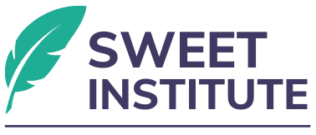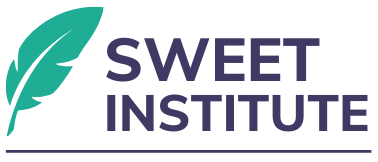The SWEET Model in Supervision, Coaching, and Mentoring: From Skill-Building to Identity Transformation

The SWEET Model in Supervision, Coaching, and Mentoring: From Skill-Building to Identity Transformation
Abstract
Supervision, coaching, and mentoring are essential components of professional development for mental health clinicians. Yet many approaches focus solely on skill acquisition, overlooking the deeper layers of transformation needed for growth, fulfillment, and mastery. This article explores how the SWEET Model reimagines supervision and mentoring as a multidimensional process that supports learning across the conscious, preconscious, unconscious, and existential layers. Drawing from adult learning theory, applied neuroscience, psychodynamic principles, and transformational leadership models, the SWEET Model facilitates a shift from external feedback to internal alignment—helping clinicians and leaders transform their professional identity from within.
Keywords
SWEET Model, SWEET Institute, supervision, coaching, mentoring, clinical development, transformational learning, identity transformation, leadership, reflection
Introduction
Clinical supervision is often reduced to administrative checklists or isolated feedback sessions. Coaching and mentoring can be fragmented, episodic, or task-focused. But at their best, these relationships are vehicles for transformation—an opportunity not just to improve performance but to deepen insight, embody values, and align one’s work with meaning and purpose.
The SWEET Model provides the framework to do just that. By integrating conscious competencies with deeper inner work, it transforms the traditional paradigm of professional guidance into a process of layered transformation that aligns with the clinician’s evolving identity (Mezirow, 1997).
Theoretical Framework
The SWEET Model is grounded in the Four-Layered Transformation Framework:
- Conscious – Technical knowledge, observable skills
- Preconscious – Patterns, habits, emotional reactions
- Unconscious – Core fears, inner conflicts, defenses
- Existential – Purpose, values, identity, mortality
This layered model expands on Freud’s topographical theory (Freud, 1915/1957) and integrates insights from existential psychology (Yalom, 1980; Frankl, 1985), cognitive neuroscience (Siegel, 2007), and transformational learning theory (Mezirow, 1997).
In a supervision or coaching context, each layer becomes a domain of inquiry:
- The conscious layer is addressed through clinical techniques and feedback.
- The preconscious layer emerges in the form of habits, blind spots, and relational dynamics.
- The unconscious layer surfaces in resistance, transference, or emotional reactivity.
- The existential layer brings up questions of fulfillment, purpose, and identity.
This framework creates the space for not just learning what to do, but becoming who one is meant to be.
Application and Analysis
The SWEET Method operationalizes the model using:
- The SWEET Formula: Why → What → How → Then What
- The SWEET Framework: Principles, Techniques, Steps, Do’s and Don’ts
- The SWEET Paradigm: Socratic Method, Desire Method, Collective Learning, Critical Thinking, Mastery
In supervision:
- Socratic questioning helps clinicians reflect and generate their own insights (Paul & Elder, 2006).
- The “Why” explores personal investment and meaning.
- The “Then What” turns reflection into committed action.
A clinician avoiding assertive communication might initially seek skill-building, but supervision rooted in the SWEET Model helps uncover deeper fears of rejection (unconscious), emotional responses to authority (preconscious), and unexamined professional values (existential). This enables true transformation, not just compliance or performance (Goleman, 2006).
The same principles apply in coaching and mentoring, where the emphasis is not simply goal achievement, but becoming more integrated, intentional, and aligned.
Implications
This layered, reflective, and experiential model has wide-reaching implications:
- For clinical supervision: Deepens the learning alliance and enhances emotional safety.
- For organizational culture: Fosters psychological resilience, ethical leadership, and mutual accountability.
- For leadership development: Moves from command-control to transformational leadership rooted in awareness and alignment.
- For burnout prevention: Helps clinicians realign with their deeper motivations and sense of calling (Maslach & Leiter, 2016).
Conclusion
The SWEET Model transforms supervision, coaching, and mentoring from episodic interactions into precious, layered conversations. It helps clinicians grow not only in skill but in insight, values, and identity. It invites the profession to elevate its developmental practices and remember that the clinician is not merely a technician, but a human being in continuous transformation.
References
- Frankl, V. E. (1985). Man’s search for meaning. Beacon Press.
- Freud, S. (1957). The unconscious. In J. Strachey (Ed. & Trans.), The Standard Edition of the Complete Psychological Works of Sigmund Freud (Vol. 14, pp. 159–204). (Original work published 1915)
- Goleman, D. (2006). Emotional intelligence: Why it can matter more than IQ. Bantam Books.
- Maslach, C., & Leiter, M. P. (2016). Burnout: A multidimensional perspective. Taylor & Francis.
- Mezirow, J. (1997). Transformative learning: Theory to practice. New Directions for Adult and Continuing Education, (74), 5–12.
- Paul, R., & Elder, L. (2006). The miniature guide to the art of Socratic questioning. Foundation for Critical Thinking.
- Siegel, D. J. (2007). The mindful brain: Reflection and attunement in the cultivation of well-being. W. W. Norton.
- Yalom, I. D. (1980). Existential psychotherapy. Basic Books.






